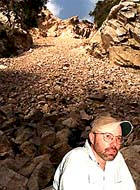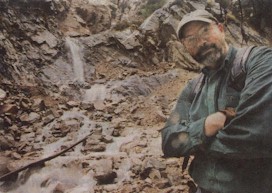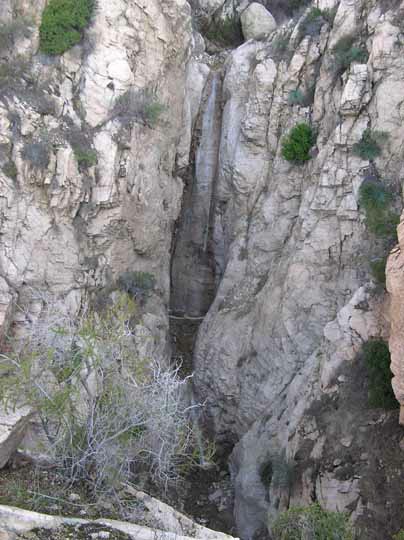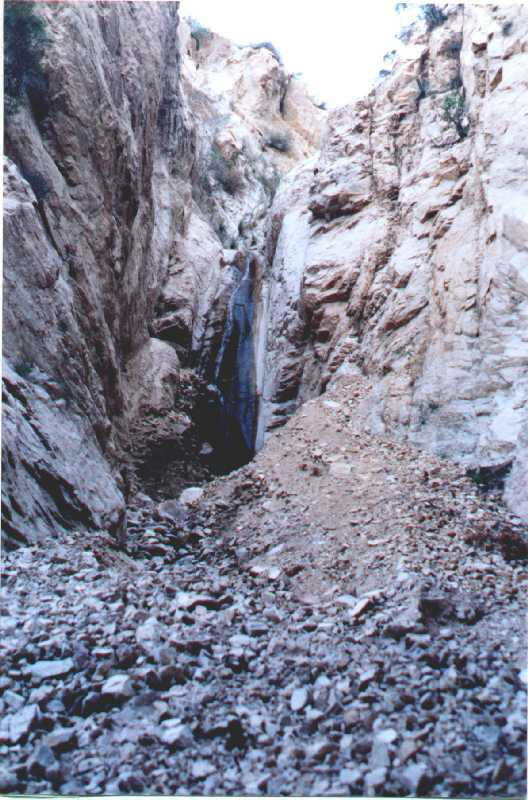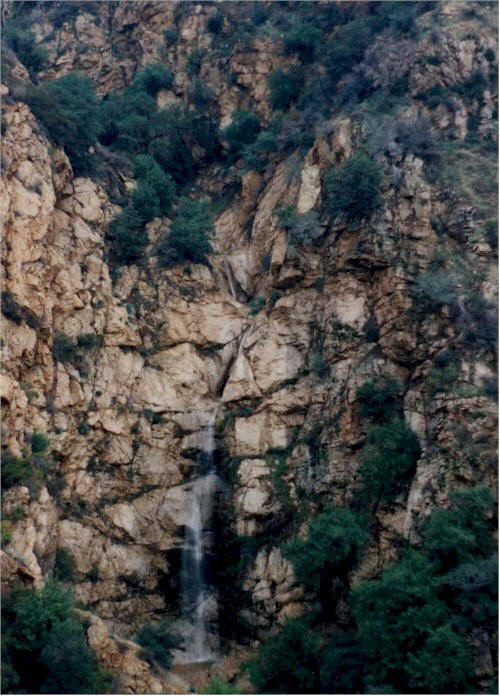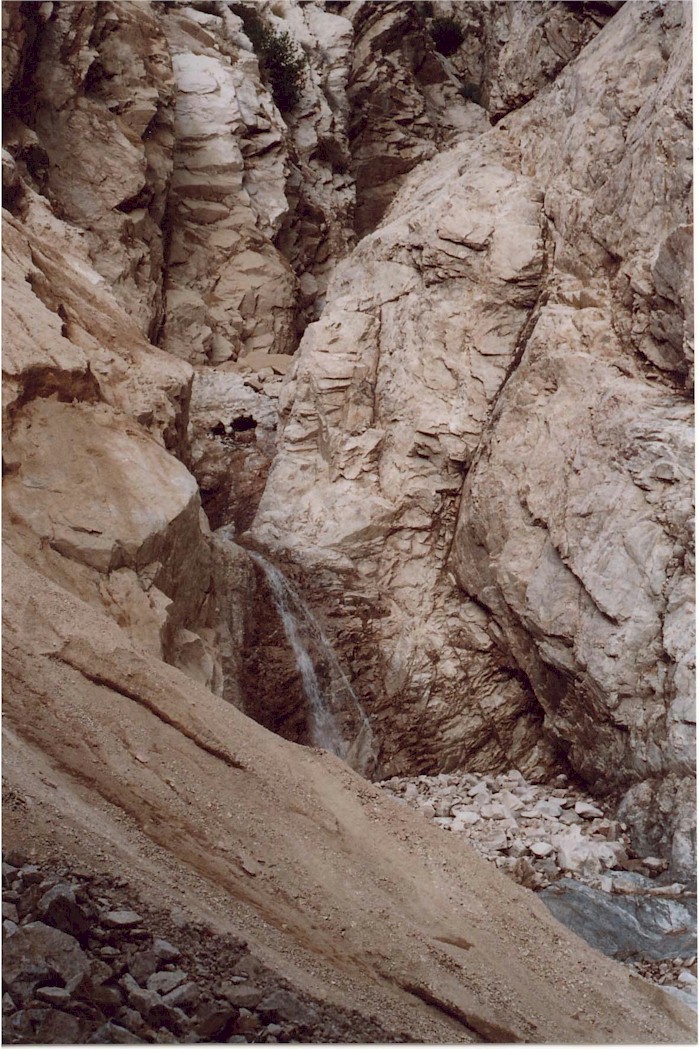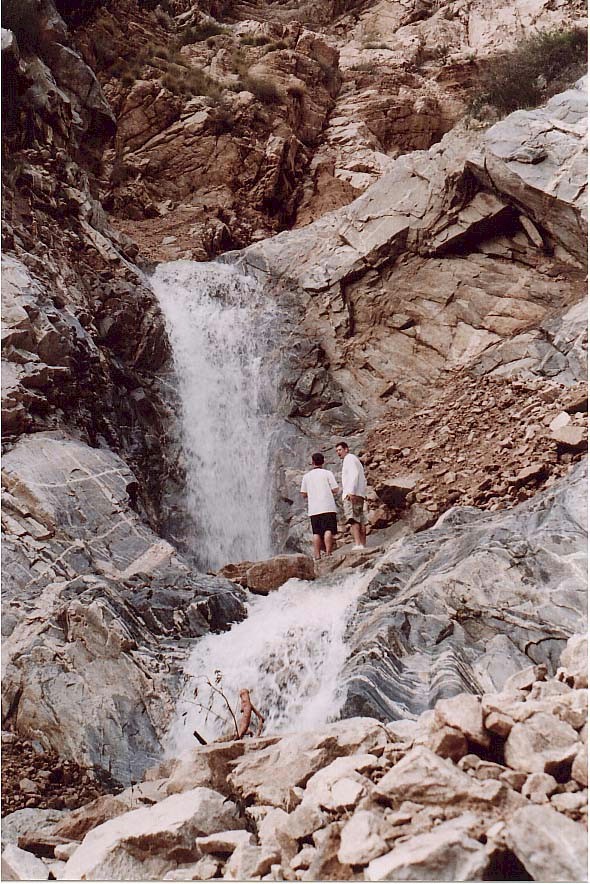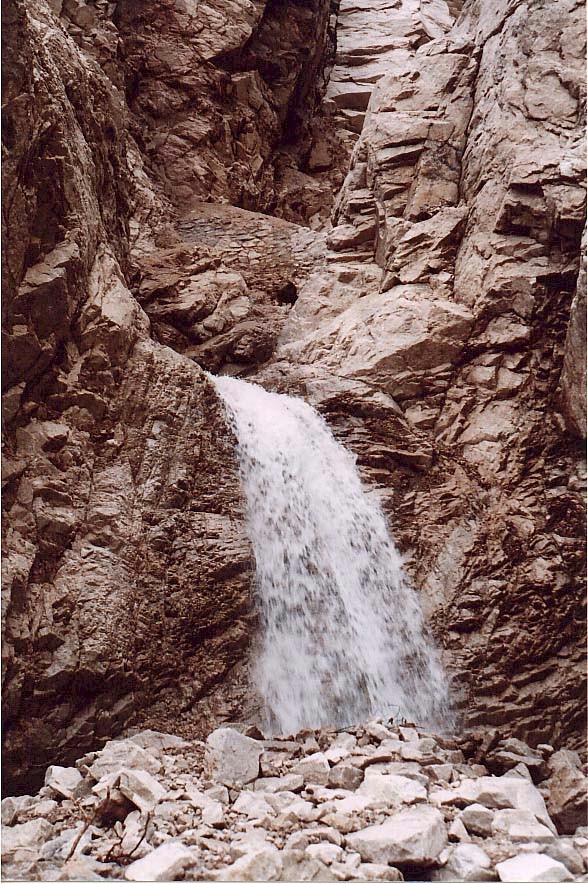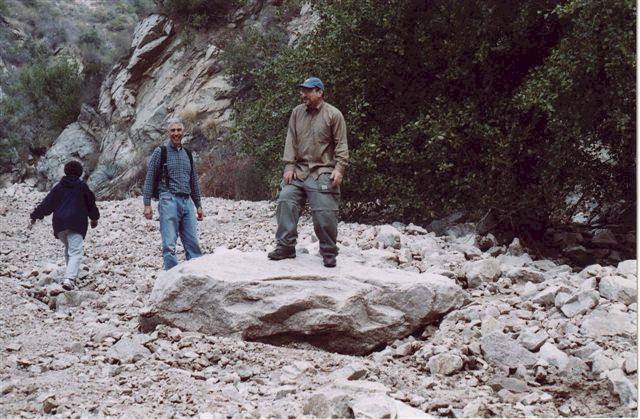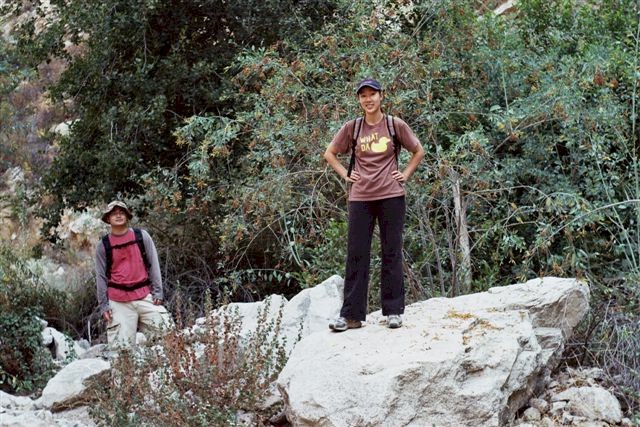Storm Restores Waterfalls Buried in '98 Slide(see bottom 2 photos taken 12/30/04 right after a heavy rain - the falls are flowing profusely) Heavy rains dislodge boulders and debris that had covered the cascades above Altadena.By Bob Pool Note by Webmaster: This problem has been causing terrific legal problems for the Forest since 1998. Mother Nature stepped in in 2004 and eraticated most of the trouble.
|
|
|
|
|
| Picture to left shows Paul Ayers with rock slides at his back in 2000. After recent storms in October, 2004, here (pic at right) is the same view behind Paul showing how the heavy rains cleared away 50,000 tons of rocks in one fell swoop. | |
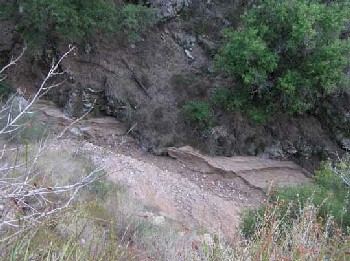 |
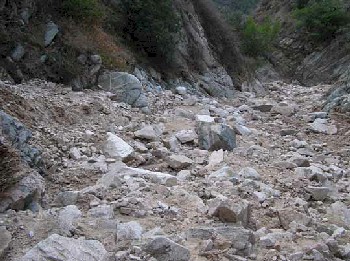 |
|
These are shots by John
Harrigan taken on Saturday , Oct. 17, 2004 |
|
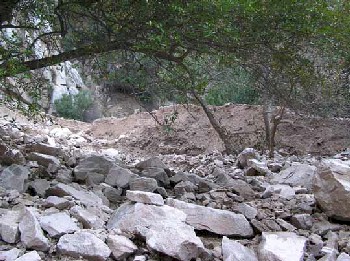 |
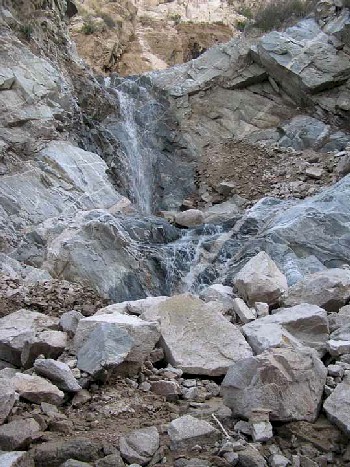 |
|
Left: Bottom of the slide before storm Right: Formerly buried falls |
|
|
Thalehaha Falls |
|
|
Roaring Rift |
|
|
|
|
|
Leontine Falls (the uppermost falls) |
|
|
Below photo
from Paul Ayers taken 10/25/04 from inside canyon, between Moss Grotto
and Grand Chasm Falls. At upper center is the Lowe dam. In speaking
with Chris Brennan, a Cal Tech professor who has climbed extensively in
the canyon, he is of the opinion that more of the dam is visible than
before, that an accumulation of dirt and debris has been cleaned off.
Below is Grand Chasm, and in front of that is all that is left of the
debris pile. Note that behind the dam, in Mirror Lake, there appear to
be large boulders and debris
|
|
|
After Heavy Rains -
Below
Moss Grotto - taken 12/30/04 after heavy rain |
|
|
Grand Chasm 12/30/04 after heavy rain |
|
|
And for the first time since 1998,
30-foot-deep Mirror Lake and remnants of a hydroelectric plant — which
Civil War balloonist and inventor Thaddeus Lowe built in 1892 to power
his legendary Mt. Lowe Incline Railway — also were visible. The canyon's waterfalls and Lowe's hotels and mountain lookout were popular tourist destinations at the turn of the 20th century. To worldwide amazement, he installed a 6-million-candlepower searchlight on the peak that was said to be bright enough to read a newspaper by on distant Santa Catalina Island. Before fires destroyed his hotel, tavern and the wooden trestles that supported narrow-gauge rail cars along a dizzying, 3 1/2 -mile route, about 3.1 million tourists had visited the canyon over a 41-year period that started in 1893. The huge rockslide that plugged the falls was triggered in 1998 by repairs to a 4-inch pipe that a local water company used to supply about 200 Altadena homes. The Rubio Canon Land and Water Assn., citing damage from the 1994 earthquake, was using Federal Emergency Management Agency funds to pay for a new stretch of pipeline. The slide occurred when workers carving a mountainside notch to hold the pipe dislodged tons of granite boulders and gravel. The rocks plugged the gorge that contained the six waterfalls. Outraged environmentalists, hiking enthusiasts and history buffs demanded that the water company and federal government remove the rocks and restore the falls. During a lengthy study and a series of public hearings, people suggested various ways to remove the rocks, including using helicopters, conveyer belts, rail cars and even mule trains. In the end, the National Forest Service decided last year to build a road into the canyon and truck out the debris. The price tag for that cleanup was estimated at $3 million (the most expensive alternative would have cost about $6 million). Water company officials, worried about being stuck with the bill, appealed the decision. That appeal had yet to be heard when last week's surprise storm — which might have dumped as much as 10 inches of rain in the mountains above Altadena — made moot both the appeal and the cleanup project. Environmentalist and hiking enthusiast Paul Ayers was doing volunteer trail maintenance work in the canyon on Oct. 21 when he saw the falls flowing. On Wednesday afternoon, with a new storm pelting him, Ayers returned to the canyon for another look. "We've won. We've got the waterfalls back. But we've got up to 20 feet of gravel and rock in the creek bed covering Maidenhair Falls downstream," he said. "I think there was a catastrophic event [on Oct. 20] when the rain was hardest. I think there was a lot of water behind the pile that was pushing and lubricating, and the whole thing went kapooey. "I think it happened real quick. The infrastructure of the water pipe system is gone. One little end is hanging in mid-air, water coming out the end of it." Ayers, a Glendale attorney, said he and others would now press for revocation of the water company's 118-year-old canyon water collection permit. "We're an urban forest, primarily for recreational users," Ayers said. "They can pick up their water in wells at the base of the canyon. They can buy more Metropolitan Water District water. They don't have the absolute right to transverse the national forest." The canyon's gray granite walls glistened as Ayers hiked through a chilly afternoon rain past concrete bridge abutments that suspended Lowe's railway tracks over the edge of the canyon. At the streambed, Ayers pulled yellow explosive detonation cord out of streambed debris and repeated his contention that improper blasting had caused the original rockslide. But Rubio Canon officials deny that blasting was done to create the pipe notch. Water association board President Janet Fahey said Wednesday that repair crews had a permit to dig out and discard rock debris in the canyon. Fahey said she and others had thought all along that nature would take its course and sweep the rocks away from the waterfalls. "The Forest Service said it could take 50 years for that to happen. They thought that was unacceptable," Fahey said. "To my mind, I think part of the problem is human life is too short: We don't get to think in more geologic terms. The story that has been brought home to me by this is that the San Gabriel Mountains are eroding all the time and rocks are constantly falling." Fahey said water drawn from Rubio Canyon is the company's best and cheapest source to supply its 3,000 customers. She said pipes bringing water to the area already run at full capacity. "At this point, I have no plans to relinquish those water rights," she said. "But I don't know what the Forest Service is going to do, or what Paul Ayers is going to do." Kathy Peterson, assistant public affairs officer for the Angeles National Forest, said it was too soon to determine what her agency's position would be. She said the debris in the canyon bottom is unstable and likely to be moved farther downstream and thinned out during the normal winter rainy season. "We have to assess what we have going on out there," Peterson said Wednesday afternoon. "Whatever we do out there, we'll decide in an open forum."
October 23, 2004
August 2, 2008 “The Floating Boulder”-When the Rubio Canyon debris pile collapsed on the night of October 20, 2004, ~20,000 cubic yards of fragmented granite mobilized and began to flow down towards the Rubio debris basin. The flow was mainly composed of small material but some of the pieces were quite large like the “floating boulder”, which I estimate weighs 5-7 tons, discovered just above the pavilion site. The boulder was almost certainly part of the debris pile, and when it failed, floated along the top of the debris flow “like a raisin in pudding” for about 300 yards. The first photo shows the boulder on October 23, 2004 sitting on about 4-5’ of debris flow; atop the boulder is Dr. Michael Reibel, behind is Bob Berger and an unknown woman. The torrential rains of January 2005 washed most of the smaller material down to the debris basin but the boulder remained. Shown here on it now resides more or less at stream bed level; on top is Anne, to the left is Jason. Paul Ayers
|
|

